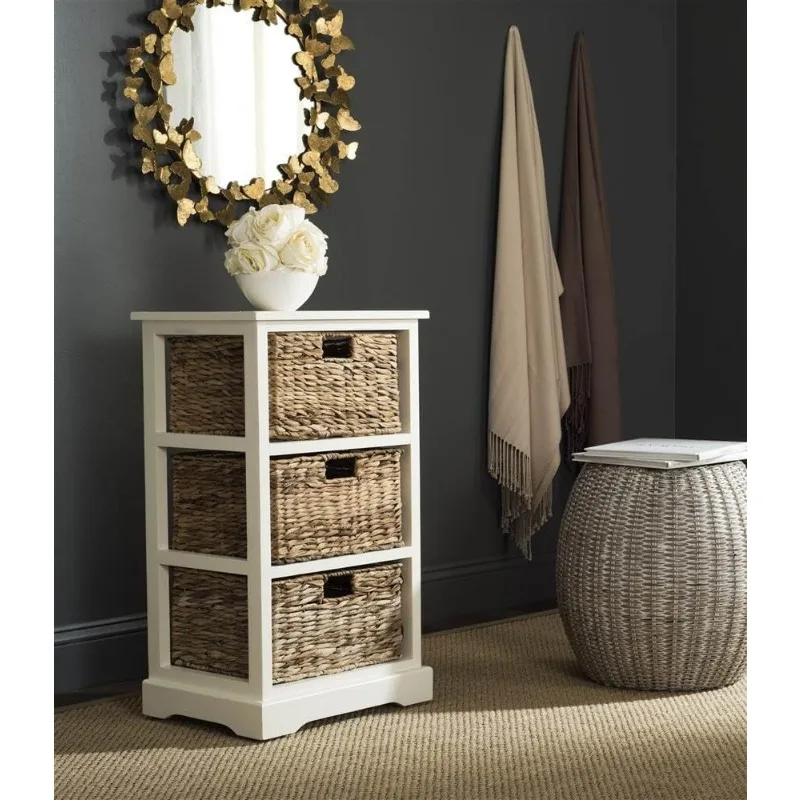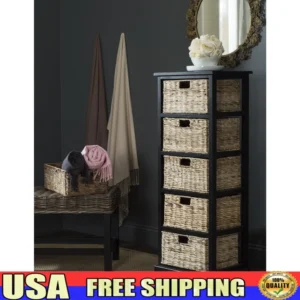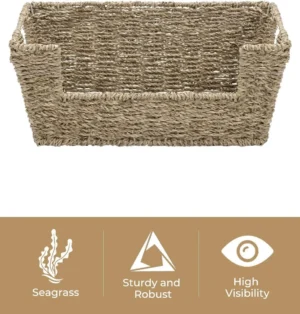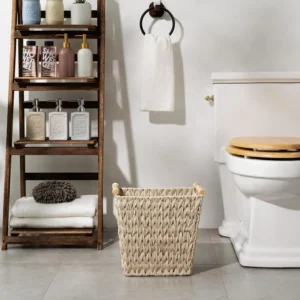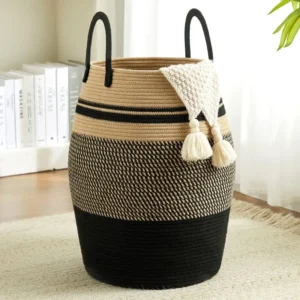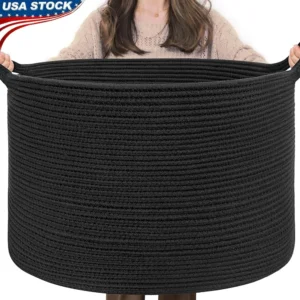Beyond Wicker – Finding Your Perfect Storage Bench Alternative
Storage benches have become essential pieces of furniture in modern homes, offering the perfect blend of functionality and style. These versatile pieces provide convenient seating while hiding away clutter, making them ideal for entryways, bedrooms, living rooms, and more. While wicker storage benches have long been popular choices, many homeowners are seeking alternatives for various reasons – perhaps you need something more durable, a different aesthetic, or a bench with specific storage capabilities.
The good news is that the world of storage benches extends far beyond wicker. Today’s market offers an impressive variety of materials, designs, and functionalities to suit every home need and style preference. From solid hardwood to weather-resistant plastics, from traditional designs to contemporary styles, there’s truly something for everyone.
Exploring alternatives to wicker storage benches opens up exciting possibilities for both functionality and design. Each material brings its own unique benefits, whether it’s the timeless warmth of wood, the sophisticated appeal of leather, or the practicality of modern synthetics. Effective organizing laundry with wicker baskets has shown how versatile storage solutions can transform spaces, and the same principles apply when selecting the perfect storage bench alternative.
In this comprehensive guide, we’ll explore the best wicker storage bench alternatives categorized by material type and functionality, helping you find the perfect match for your specific needs and home décor.
Wooden Storage Bench Alternatives: Natural Beauty Meets Functionality
Wooden storage benches represent one of the most popular alternatives to wicker, offering timeless appeal and exceptional durability. Wood brings natural warmth and character to any space while providing sturdy, reliable storage solutions that can last for decades with proper care. Unlike wicker, wooden benches offer substantial weight capacity and can be crafted in virtually any style from rustic farmhouse to sleek contemporary.
The versatility of wooden storage benches makes them suitable for nearly any room in your home. In entryways, they provide convenient seating for removing shoes while storing seasonal accessories. In bedrooms, they offer elegant end-of-bed storage for extra linens. In living spaces, they can conceal toys, games, or media items while providing additional seating when entertaining.
Wooden storage benches fall into three primary categories, each with distinct characteristics: solid wood, engineered wood, and thermally modified wood. Each type offers different benefits and considerations that complement various wicker storage trunks for comprehensive home organization solutions.
Solid Wood Storage Benches: Timeless Durability
Solid wood storage benches represent the premium tier of wooden alternatives, crafted from genuine hardwood or softwood lumber. These benches are prized for their exceptional durability, substantial weight, and ability to last for generations when properly maintained. The natural variations in grain patterns and coloration add unique character to each piece.
Several wood species offer distinct advantages for storage bench construction:
- Oak: Renowned for exceptional durability and distinctive grain patterns, oak benches withstand heavy use while developing rich patina over time.
- Maple: Features a smooth, consistent texture with excellent resistance to wear and scratching, ideal for high-traffic areas.
- Pine: Offers affordable charm with a rustic, knotty appearance, though softer than hardwoods.
- Teak and Acacia: Naturally resistant to moisture and insects, making them excellent choices for outdoor or bathroom storage benches.
- Cedar: Contains natural oils that repel insects and resist decay, with a distinctive aroma that freshens linens and clothing.
Common design styles include traditional mission, shaker, farmhouse, and mid-century modern, with finishes ranging from natural to painted or stained. While offering unmatched durability, solid wood requires periodic maintenance like dusting and occasional conditioning with appropriate wood oils or waxes to maintain its beauty.
For those who appreciate textile storage solutions, complementary wicker blanket baskets can enhance the organization of softer items while wooden benches handle heavier storage needs.
Pros:
* Exceptional durability lasting decades
* Develops character with age
* Superior weight capacity
* Can be refinished if damaged
* Natural beauty with unique grain patterns
Cons:
* Higher cost ($300-800+)
* Heavier and more difficult to move
* May expand/contract with humidity changes
* Requires periodic maintenance
* Can be susceptible to scratches
Engineered Wood Storage Benches: Affordable Versatility
Engineered wood storage benches provide an excellent middle-ground option between solid wood and less durable materials. These benches utilize manufactured wood products like Medium Density Fiberboard (MDF), plywood, or particleboard, typically finished with attractive veneers or laminates that mimic the appearance of solid wood at a fraction of the cost.
The construction process involves binding wood fibers, particles, or veneers with adhesives under heat and pressure to create stable, uniform boards. These materials are then cut to size and assembled into furniture pieces, often featuring wood veneer exteriors for natural aesthetic appeal.
Engineered wood benches excel in design versatility, available in countless styles from minimalist modern to ornate traditional. Popular options include farmhouse storage benches with cushioned tops, mid-century inspired pieces with tapered legs, and transitional designs that blend with various décor styles.
Pros:
* Cost-effective ($100-300 typical range)
* Lighter weight for easier repositioning
* Resistant to warping and cracking
* Consistent appearance without knots
* Wide variety of finishes and styles
Cons:
* Shorter lifespan than solid wood
* Cannot be repeatedly refinished
* Susceptible to water damage and swelling
* Less durable edges and corners
* May contain formaldehyde in some adhesives
Thermally Modified Wood Storage Benches: Modern Innovation
Thermally modified wood represents an innovative alternative that enhances natural wood’s performance through an eco-friendly heat treatment process. This specialized technique subjects lumber to high temperatures (typically 320-450°F) in a low-oxygen environment, fundamentally altering the wood’s cellular structure without chemicals.
The result is a remarkably stable, moisture-resistant material with enhanced durability perfect for storage benches in challenging environments. The process darkens the wood to rich chocolate tones while eliminating compounds that typically feed mold, fungi, and insects.
These benches excel in semi-protected outdoor environments like covered patios or screened porches, where traditional wood would deteriorate and wicker would quickly break down. They also work beautifully in humid indoor spaces like bathrooms or pool areas.
Pros:
* Exceptional resistance to moisture and decay
* Dimensional stability with minimal warping
* Chemical-free enhancement process
* Distinctive rich coloration
* Eco-friendly alternative to tropical hardwoods
Cons:
* Premium pricing ($400-900+)
* Limited availability compared to other options
* Can be somewhat brittle if improperly treated
* Limited color options (primarily darker tones)
* May weather to gray if left untreated outdoors
Upholstered Storage Bench Alternatives: Comfort Meets Concealment
Upholstered storage benches represent a perfect marriage of comfort and functionality, transforming basic storage into elegant furniture pieces that enhance your décor. These benches feature padded tops and fabric or leather coverings that invite sitting, lounging, and relaxing while concealing ample storage space beneath.
Unlike wicker benches that prioritize texture over comfort, upholstered alternatives create inviting seating experiences in bedrooms, living areas, or entryways. They function as both practical organizers and soft furnishings, often becoming focal points in well-designed rooms.
The versatility of upholstered benches allows them to serve multiple purposes: as stylish end-of-bed benches in bedrooms, additional seating in living rooms, or welcoming landing spots in entryways. They particularly shine in spaces where both storage and comfortable seating are priorities, complementing other organizational systems like effortless laundry organization with wicker baskets.
Fabric Upholstered Storage Benches: Soft Elegance
Fabric upholstered storage benches bring textile softness and design versatility to any space. These pieces combine internal storage compartments with padded, fabric-covered exteriors that add texture, color, and comfort to your home.
Popular upholstery fabrics for storage benches include:
- Linen: Light, breathable natural fiber with casual elegance and textural interest
- Cotton: Durable, washable, and available in countless patterns and colors
- Polyester blends: Practical, stain-resistant options ideal for high-traffic areas and homes with children
- Velvet: Luxurious, plush texture that adds sophisticated glamour and rich color depth
- Boucle: Trendy textured fabric with a looped, nubby surface for contemporary appeal
Design styles range from clean-lined modern pieces with channel tufting to traditional benches with button tufting and decorative nailhead trim. Many feature designer details like piping, welting, or contrast fabrics that elevate their appearance.
Pros:
* Comfortable, padded seating surface
* Wide range of colors, patterns, and textures
* Softens room acoustics and appearance
* Often features designer details like tufting
* Easily updated with slipcovers or reupholstering
Cons:
* Requires regular cleaning and maintenance
* Susceptible to stains and spills
* Not suitable for outdoor use
* Can show wear in high-traffic areas
* May require professional cleaning
Leather and Faux Leather Storage Benches: Sophisticated Durability
Leather and faux leather storage benches combine luxurious aesthetics with practical durability, offering sophisticated alternatives to wicker options. These benches feature smooth, sleek surfaces that add refined elegance to any space while providing resilient seating and storage solutions.
Genuine leather storage benches represent premium investment pieces that develop rich patina and character over time. Made from animal hides treated to preserve flexibility and durability, these benches feature natural variations in color and texture that add depth and interest. Genuine leather resists stains, spills, and wear while maintaining its elegant appearance for decades.
Faux leather alternatives (also called vinyl or PU leather) offer similar aesthetics at more accessible price points. These synthetic materials mimic leather’s smooth texture and appearance while providing excellent stain resistance and easy maintenance. Modern faux leathers have become increasingly sophisticated, often featuring realistic textures and breathable constructions.
Pros:
* Exceptionally easy to clean (just wipe with damp cloth)
* Highly resistant to stains and spills
* More durable than fabric upholstery
* Develops character with age (genuine leather)
* Contemporary, sophisticated appearance
Cons:
* Genuine leather carries premium prices ($400-1000+)
* Can feel cold in winter or hot in summer
* Faux options may crack or peel over time
* Limited color options compared to fabric
* May require periodic conditioning (genuine leather)
Metal Storage Bench Alternatives: Industrial Strength and Style
Metal storage benches deliver industrial chic style combined with exceptional strength and durability. These contemporary alternatives to wicker bring clean lines, sleek surfaces, and modern aesthetics to any space while providing robust storage solutions that stand the test of time.
The distinctive appeal of metal furniture comes from its ability to appear both industrial and refined simultaneously. Metal benches can incorporate minimalist design elements that complement modern interiors or feature ornate detailing that adds character to traditional spaces. Many designs combine metal frames with wood, glass, or upholstered elements for visual interest and comfort.
Metal storage benches excel in both form and function, offering superior structural integrity and weight capacity compared to wicker alternatives. The two primary metals used in these benches – steel and aluminum – each bring unique benefits to different applications.
Steel Storage Benches: Industrial Strength
Steel storage benches represent the ultimate in durability and strength, providing industrial-inspired designs with exceptional weight capacity and longevity. These robust alternatives to wicker feature solid steel construction, typically finished with protective powder coating or paint to prevent rust and corrosion.
The manufacturing process involves cutting, bending, and welding steel components to create sturdy frames that support significant weight without flexing or bowing. Quality steel benches feature reinforced joints, precision welds, and thick-gauge metal that maintains structural integrity even with daily use.
The aesthetic appeal of steel benches ranges from raw industrial designs that showcase the material’s strength to refined contemporary pieces with sleek lines and modern finishes. Many incorporate wood seats or upholstered cushions to soften the look and provide comfortable seating.
Pros:
* Exceptional strength and durability
* Superior weight capacity (often 500+ pounds)
* Resistant to damage and denting
* Low maintenance requirements
* Modern industrial aesthetic
Cons:
* Heavier and more difficult to move
* Can rust if powder coating is damaged
* Often cold and uncomfortable without cushioning
* Limited design variety compared to other materials
* May scratch flooring if not properly protected
Aluminum Storage Benches: Lightweight Resilience
Aluminum storage benches offer a lighter alternative to steel while providing excellent corrosion resistance and modern appeal. These benches combine the strength of metal with significantly reduced weight, making them ideal for spaces where mobility matters.
The natural properties of aluminum make these benches inherently rust-proof without requiring special coatings or treatments. This non-ferrous metal forms a protective oxide layer when exposed to oxygen, continuously protecting itself from corrosion – a significant advantage over both steel and wicker for outdoor applications.
Modern aluminum benches feature clean lines and contemporary styling, often with powder-coated finishes in various colors. Many designs incorporate slat construction that reduces weight further while providing visual interest through light and shadow play.
Pros:
* Naturally rust-proof and weather-resistant
* Significantly lighter than steel options
* Modern, sleek appearance
* Minimal maintenance requirements
* Ideal for outdoor and humid environments
Cons:
* More susceptible to denting than steel
* Typically more expensive than steel options
* Less substantial feel than heavier materials
* Limited insulation properties (cold in winter)
* Fewer traditional or ornate design options
Plastic and Resin Storage Bench Alternatives: Weather-Defying Practicality
Plastic and resin storage benches offer superior weather resistance and practical benefits that make them excellent alternatives to traditional wicker. These synthetic options excel in challenging environments where natural materials would quickly deteriorate, providing long-lasting functionality with minimal maintenance requirements.
The evolution of plastic furniture has produced increasingly sophisticated designs that transcend the utilitarian appearance of earlier generations. Today’s high-quality plastic and resin benches feature attractive finishes, realistic textures, and design details that rival more expensive materials while offering exceptional durability.
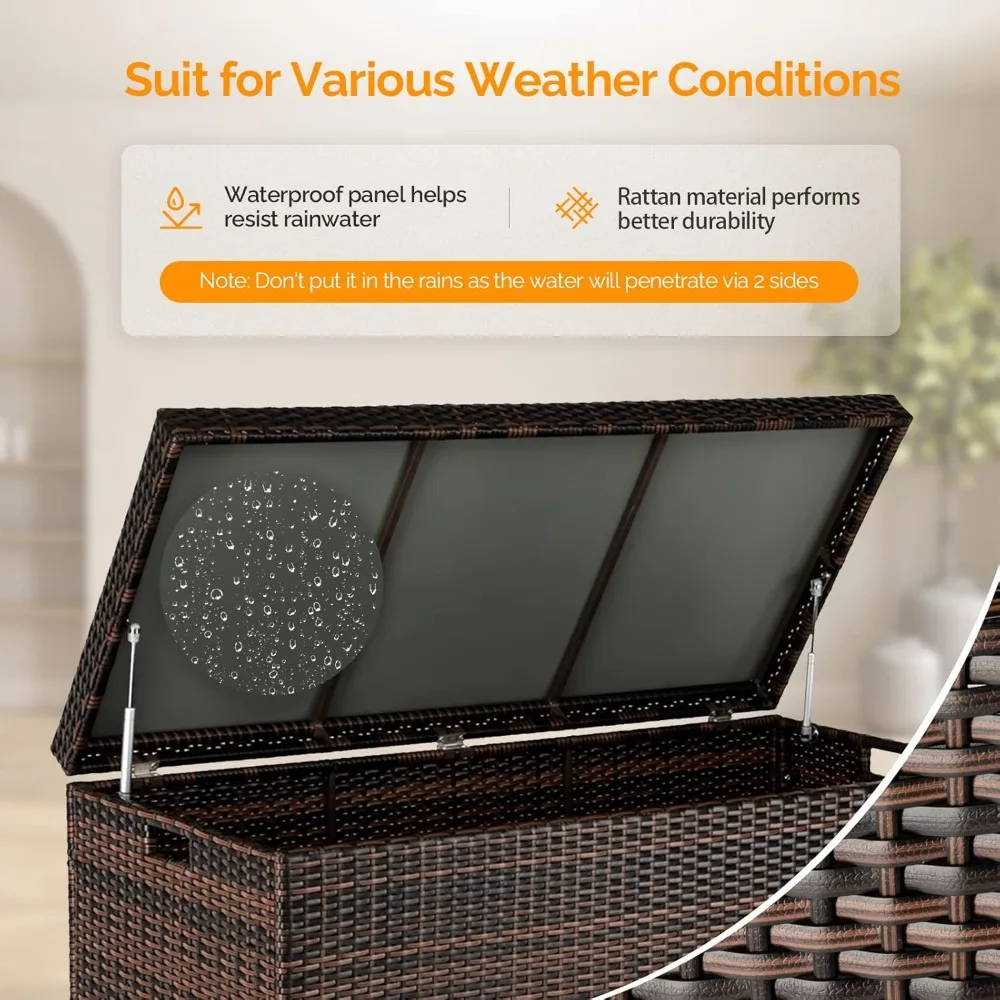
These alternatives particularly shine in outdoor spaces, wet areas, children’s rooms, and utility spaces where exposure to moisture, UV rays, or rough handling would damage traditional materials. For comprehensive storage solutions, they can be paired with specialized wicker laundry basket storage ideas in protected indoor areas.
HDPE Storage Benches: Weather-Defying Durability
High-Density Polyethylene (HDPE) storage benches represent the premium tier of plastic alternatives, offering exceptional durability in a sustainable package. These benches are typically manufactured from recycled plastic (often milk jugs and detergent bottles) that’s been processed into a remarkably durable, dense material resistant to virtually all environmental challenges.
The manufacturing process involves heating and molding recycled HDPE into solid, heavy components that mimic the appearance of painted wood but require none of the maintenance. Unlike hollow plastic furniture, these benches feature solid construction with impressive weight and stability that rivals traditional materials.
What sets HDPE benches apart is their unmatched durability in outdoor environments. They resist fading from UV exposure, never rot or develop mold, don’t splinter or crack, and can be left outdoors year-round in any climate without deterioration. Many manufacturers offer 20+ year warranties, reflecting their exceptional longevity.
Pros:
* Virtually maintenance-free (just occasional washing)
* Exceptional resistance to weather, fading, and moisture
* Won’t crack, splinter, rot, or develop mold
* Environmentally friendly (made from recycled materials)
* Available in various colors that permeate throughout the material
Cons:
* Higher initial cost than basic plastic ($300-700)
* Heavier than hollow plastic options
* Limited design styles (primarily casual/outdoor)
* Synthetic appearance up close
* Limited color selection compared to other materials
Synthetic Wicker Storage Benches: All-Weather Wicker Alternative
Synthetic wicker (also called PE wicker or poly rattan) storage benches offer the aesthetic appeal of natural wicker with dramatically improved durability and weather resistance. These benches feature woven synthetic fibers around metal or resin frames, creating the distinctive textural appearance of wicker without its vulnerability to moisture, sunlight, and temperature fluctuations.
The manufacturing process involves extruding high-density polyethylene or similar polymers into flexible strands that are UV-stabilized to prevent fading and degradation. These strands are then woven around sturdy frames in patterns that mimic traditional wicker weaving techniques, creating pieces that are virtually indistinguishable from natural wicker at a glance.
The primary advantage of synthetic wicker is its exceptional ability to withstand outdoor conditions. Unlike natural wicker that quickly deteriorates when exposed to moisture and sunlight, synthetic versions can endure years of exposure without fading, becoming brittle, or developing mold and mildew. They’re particularly well-suited for covered patios, porches, and poolside areas.
For additional storage options with similar durability benefits, consider exploring lidded wicker storage solutions that complement synthetic wicker benches.
Pros:
* Appears nearly identical to natural wicker
* Exceptional weather and UV resistance
* Doesn’t absorb water or develop mold
* Easy to clean with simple hosing or wiping
* Maintains flexibility without becoming brittle
Cons:
* Petroleum-based material (environmental considerations)
* Lower-quality versions can look artificial
* Typically requires metal framing for strength
* Can be damaged by extreme heat (fire pits, etc.)
* Mid-range price point ($200-600)
Molded Plastic Storage Benches: Affordable Functionality
Molded plastic storage benches provide budget-friendly alternatives that combine lightweight construction with practical functionality. These benches feature one-piece or assembled designs created through injection molding or rotational molding processes that create hollow yet sturdy structures.
The manufacturing approach involves injecting liquid plastic into molds or rotating powder-filled molds while heating, resulting in seamless pieces with consistent thickness and structural support where needed. This process allows for creative shapes, integrated features like drainage holes, and affordable mass production.
These benches excel in casual environments where practicality trumps aesthetics – playrooms, garages, mudrooms, or as supplementary outdoor seating. Many feature simple tool-free assembly and can be easily relocated as needs change.
Pros:
* Highly affordable price point ($50-150)
* Extremely lightweight and easy to move
* Completely waterproof and easy to clean
* Available in bright colors for children’s spaces
* Resistant to stains and most chemicals
Cons:
* Limited weight capacity compared to other materials
* Less sophisticated appearance
* Prone to UV degradation without stabilizers
* Can crack in extreme cold
* Shorter lifespan than premium alternatives
Storage Bench Alternatives by Design and Functionality
Beyond material considerations, storage bench functionality significantly impacts how effectively these pieces serve your organizational needs. Different opening mechanisms, compartment configurations, and specialized designs address specific storage challenges and access requirements.
The right functional design transforms a storage bench from merely convenient to perfectly tailored for your lifestyle. Whether you need maximum storage volume, frequent access to smaller items, display capability for decorative objects, or specialized organization for specific items, there’s an optimal configuration for your needs.
When selecting the ideal storage bench alternative, consider both how you’ll use the storage space and how frequently you’ll need to access contents. High-use areas like entryways benefit from different configurations than occasional storage in guest rooms or seasonal storage in outdoor spaces. These functional designs complement other home organization solutions like various storage utility options for comprehensive organization.
Flip-Top Storage Benches: Maximizing Space
Flip-top storage benches feature hinged lids that open upward to reveal a single large storage compartment, maximizing interior volume while maintaining a clean exterior appearance. This classic design optimizes storage capacity by utilizing the entire interior space without dividers or drawers that reduce usable volume.
The uninterrupted interior space makes these benches ideal for storing larger items like blankets, pillows, seasonal clothing, sporting equipment, or toys. The single large compartment also accommodates irregularly shaped items that wouldn’t fit neatly in compartmentalized storage.
Quality flip-top benches feature safety mechanisms like slow-close hinges or lid supports that prevent pinched fingers and allow the lid to remain open during access. Some designs include removable dividers for flexible organization while maintaining the option for full-volume storage.
Examples:
* Bedroom benches for storing extra bedding and pillows
* Living room benches concealing throw blankets and media accessories
* Entryway benches hiding seasonal items like winter accessories
* Toy storage benches in playrooms or children’s bedrooms
Drawer Storage Benches: Organized Accessibility
Drawer storage benches feature pull-out drawers beneath a fixed seating surface, providing organized access to contents without moving items from the top. This design excels for storing smaller items that benefit from categorization and easy retrieval without disturbing seating arrangements.
The drawer configuration is particularly valuable for items accessed daily or frequently, as contents remain visible and reachable without lifting heavy lids or removing decorative elements from the bench top. Multiple drawers allow logical grouping of different item categories, enhancing organizational efficiency.
Quality drawer benches feature smooth-gliding hardware like ball-bearing drawer slides that ensure easy operation even when heavily loaded. Better versions include drawer stops to prevent accidental removal and soft-close mechanisms that prevent slamming.
Examples:
* Entryway benches with drawers for gloves, scarves, and small accessories
* Bedroom benches organizing intimates or accessories
* Craft room storage for supplies and tools
* Children’s benches organizing small toys by category
Cubby and Open Shelf Storage Benches: Display and Easy Access
Cubby and open shelf storage benches feature compartmentalized spaces without doors or drawers, offering immediate visibility and access to contents. These designs balance storage functionality with decorative display opportunities, allowing both practical organization and aesthetic enhancement.
The open design makes these benches ideal for frequently accessed items where quick retrieval is important. The compartmentalized structure helps maintain organization by creating natural divisions between different categories of items, preventing the jumbled mess that can occur in single-compartment storage.
Many cubby benches are designed to accommodate standard storage baskets or bins, enhancing their organizational capabilities while adding textile interest and color. This design particularly shines in entryways for shoe storage, mudrooms for individual family member belongings, and playrooms for toy organization.
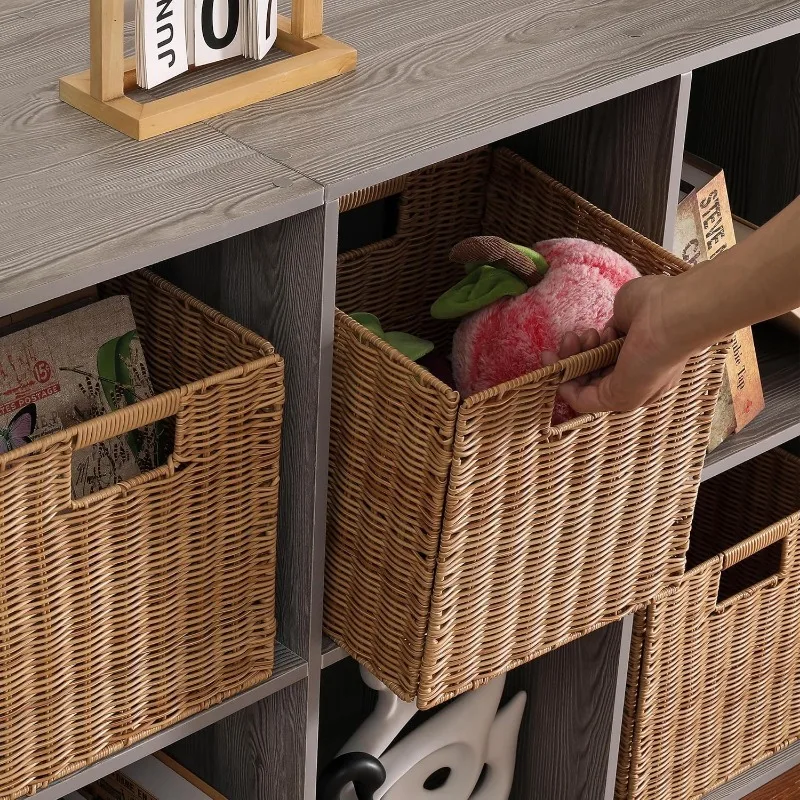
For enhanced organization, consider adding wicker baskets with lids to cubby benches for concealed storage within the open structure.
Cabinet-Style Storage Benches: Concealed Organization
Cabinet-style storage benches feature door-accessed storage compartments beneath a seating surface, combining the concealment benefits of enclosed storage with easier access than flip-top designs. These benches hide contents from view while allowing retrieval without clearing items from the seating surface.
The door design varies widely, including hinged doors that swing outward, sliding doors that move horizontally, or fold-down doors that create additional temporary surfaces. Each door style offers different benefits for spaces with various clearance constraints and access preferences.
Cabinet-style benches excel in more formal settings where concealing clutter enhances the aesthetic environment. They’re particularly valuable in living rooms, dining areas, and formal entryways where maintaining a polished appearance matters while still providing practical storage.
Examples:
* Living room media benches concealing electronics and accessories
* Dining area benches storing table linens and serving pieces
* Bedroom benches hiding personal items
* Entryway benches concealing shoes and accessories
Purpose-Specific Storage Bench Designs
Beyond general storage configurations, purpose-built benches address specific organizational needs with specialized features tailored to particular items or environments.
Shoe Storage Benches feature divided compartments sized for footwear, often with ventilation to prevent odors and moisture buildup. Some include tiered racks to maximize capacity, while others incorporate angled shelves for better visibility of stored shoes. These benches solve the common entryway challenge of shoe clutter while providing convenient seating for putting on and removing footwear.
Toy Storage Benches incorporate safety features like slow-close hinges, rounded corners, and child-friendly opening mechanisms. Many feature colorful designs, lower heights for child accessibility, and washable materials that withstand spills and creative play. These specialized benches help teach organization skills while keeping play spaces tidy.
Outdoor Cushion Storage Benches include weatherproof materials, drainage features to prevent water accumulation, and ventilated designs that allow airflow to prevent mildew. These benches protect seasonal cushions and outdoor accessories from the elements while providing convenient seating in garden or patio environments.
For bedroom organization needs that complement specialized storage benches, explore additional woven baskets for bedroom organization to create comprehensive storage systems.
How to Choose the Right Storage Bench Alternative for Your Home
Selecting the perfect storage bench alternative involves balancing practical considerations with aesthetic preferences to find a piece that enhances both functionality and beauty in your home. The right choice depends on understanding your specific needs, space constraints, and how the bench will integrate with your existing décor.
Taking time to evaluate these factors before purchasing ensures your storage bench will serve its intended purpose effectively while bringing joy through both form and function. Consider each of the following aspects to guide your decision-making process toward the ideal storage bench for your unique situation.
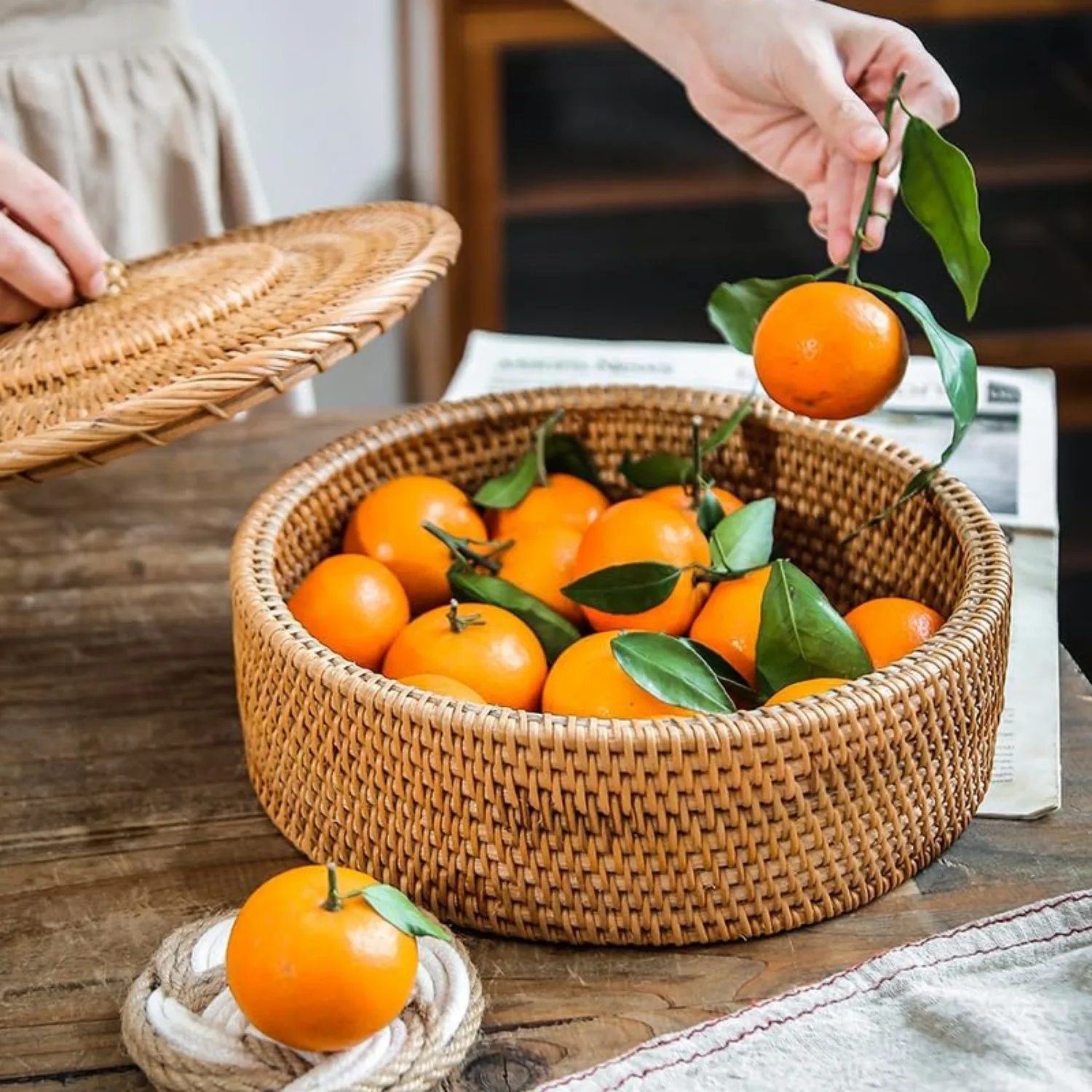
Location Considerations: Indoor vs. Outdoor Placement
The intended placement of your storage bench significantly impacts which materials and designs will perform best. Environmental factors like humidity, temperature fluctuations, UV exposure, and traffic patterns determine which alternatives will maintain their beauty and functionality over time.
For indoor high-traffic areas like entryways and mudrooms, prioritize durable materials like solid wood, metal, or leather that resist daily wear and are easily cleaned. These spaces benefit from bench designs that accommodate frequent use while standing up to dirt, moisture from shoes, and constant opening and closing.
For indoor low-traffic areas like bedrooms and formal living spaces, aesthetic considerations can take precedence with upholstered options, fine woods, or decorative designs that might not withstand heavy use but provide beauty and occasional functionality.
For covered outdoor spaces like porches and covered patios, look to aluminum, synthetic wicker, or thermally modified wood that resist moderate moisture and indirect UV exposure while maintaining attractive appearances.
For fully exposed outdoor areas, only select materials specifically rated for full outdoor exposure – HDPE, powder-coated aluminum, teak, or specialized outdoor-grade options that withstand direct sun, rain, and temperature extremes.
Black Wicker Baskets, Rattan Storage Baskets, Tall Wicker Baskets, Wicker Shelf Baskets, Woven Storage Baskets
5-Tier Distressed Black Wood Frame Storage Tower with Removable Wicker Baskets for Home Organization$715.80 Select options This product has multiple variants. The options may be chosen on the product pageWicker Laundry Baskets, Woven Laundry Baskets, Woven Storage Baskets
$392.02 Select options This product has multiple variants. The options may be chosen on the product pageWicker Baskets with Handles, Wicker Storage Baskets, Woven Storage Baskets
$137.92 Select options This product has multiple variants. The options may be chosen on the product page- $119.02 Select options This product has multiple variants. The options may be chosen on the product page
Large Wicker Laundry Baskets, Tall Wicker Baskets, Woven Laundry Hampers, Woven Storage Baskets
$130.54 Select options This product has multiple variants. The options may be chosen on the product pageWicker Blanket Baskets, Woven Laundry Baskets
$89.60 Select options This product has multiple variants. The options may be chosen on the product page
Durability and Longevity: Investing Wisely
Assessing durability factors ensures your storage bench will remain functional and attractive throughout its intended lifespan. Quality construction directly impacts longevity regardless of material choice.
Key durability indicators include:
* Joint construction: Look for reinforced corners, dowel or mortise-and-tenon joinery in wood pieces, welded (not just bolted) connections in metal pieces, and heat-fused (not glued) connections in plastic pieces.
* Material thickness: Thicker materials generally indicate better quality and durability – look for solid wood at least 3/4 inch thick, metal gauge specifications, and wall thickness in plastic components.
* Weight capacity ratings: Manufacturers’ stated weight limits indicate structural integrity – better benches support 300+ pounds.
* Hardware quality: Hinges, drawer slides, and handles should feel substantial and operate smoothly.
Expected lifespans vary dramatically by material and quality – premium wooden or metal benches may last 20+ years, quality upholstered pieces 7-10 years, and basic plastic options 3-5 years. Consider how your investment relates to the expected service life when evaluating different price points.
For additional storage options that complement your bench, explore our collection of wicker storage baskets that offer similar durability benefits.
Maintenance Requirements: Keeping It Looking Great
Different materials demand varying levels of care to maintain their appearance and functionality over time. Be realistic about the maintenance you’re willing to perform when selecting your storage bench alternative.
Wood maintenance typically involves dusting regularly, cleaning with appropriate wood cleaner, and periodic application of conditioning oils or waxes. Solid wood may need refinishing every 5-10 years if heavily used. Avoid placing in direct sunlight which can cause uneven fading.
Upholstered benches require regular vacuuming, prompt attention to spills, and occasional deep cleaning. Fabric protectant sprays can help resist staining. Some covers can be removed for washing, significantly extending aesthetic lifespan.
Metal benches need checking for rust spots (particularly at joints or scratches) and touch-up with appropriate paint. Regular dusting and occasional wiping with damp cloth maintains appearance.
Plastic and resin options typically need only occasional cleaning with soap and water. Outdoor pieces benefit from seasonal cleaning and application of UV protectant spray for prolonged appearance.
Aesthetic and Style Compatibility: Complementing Your Décor
Your storage bench should enhance your existing décor rather than clash with it. Consider how different materials and designs complement specific interior styles:
Traditional and classic interiors pair beautifully with solid wood benches in warm finishes, leather upholstery with nailhead details, or pieces with turned legs and architectural details.
Modern and contemporary spaces are enhanced by clean-lined metal benches, minimalist wood designs with straight lines, or upholstered pieces in solid neutrals or bold geometrics.
Farmhouse and rustic environments benefit from reclaimed or distressed wood, simple functional designs, and natural finishes that emphasize texture and character.
Industrial styles shine with metal-frame benches, combinations of metal and wood, and pieces that highlight structural elements rather than hiding them.
Transitional homes work well with versatile pieces that blend elements – like wood frames with upholstered seats or contemporary shapes in traditional materials.
Storage Needs: Capacity and Organization
Assessing your specific storage requirements ensures your bench will effectively contain the items you intend to store. Consider both volume needs and organizational preferences.
For large, bulky items like extra bedding, seasonal clothing, or sports equipment, prioritize flip-top designs with maximum interior volume. Look for benches with at least 8-10 cubic feet of storage space.
For smaller, frequently accessed items like shoes, accessories, or children’s toys, compartmentalized designs with drawers or cubbies provide better organization and easier retrieval.
For mixed storage needs, consider combination designs that offer both hidden compartments and open shelving, allowing versatility as your needs change.
For decorative storage, open cubbies that display attractive baskets or bins allow both organization and visual interest. Look for benches designed to accommodate standard basket sizes.
Size and Dimensions: Finding the Perfect Fit
Proper sizing ensures your storage bench functions effectively in your space without overcrowding or underutilizing available area.
Key measurements to consider:
* Exterior dimensions: Overall length, width, and height should complement surrounding furniture and leave adequate circulation space (at least 30 inches in walkways).
* Seating height: Standard bench height is 17-19 inches for comfortable adult seating. Entry benches might be slightly lower (16-17 inches) for shoe removal, while children’s benches may be 12-14 inches.
* Interior storage dimensions: Ensure the interior compartment can accommodate your intended contents with some room to spare for easy retrieval.
* Clearance requirements: For flip-top designs, allow adequate space above for the lid to open fully. For drawer designs, ensure sufficient space in front for full extension.
Budget Considerations: Value at Every Price Point
Storage bench alternatives exist across a wide price spectrum, with options available for nearly any budget. Understanding where to invest for your specific needs helps maximize value.
Budget-friendly options ($50-200) include basic molded plastic designs, engineered wood with laminate finishes, and simple upholstered benches with synthetic fabrics. These work well for temporary needs, children’s spaces, or less-visible areas.
Mid-range options ($200-500) offer significantly better durability with engineered wood construction, better upholstery fabrics, powder-coated metal frames, or combination materials. These benches typically last 5-10 years with proper care.
Premium options ($500+) provide exceptional durability through solid hardwood construction, genuine leather upholstery, superior hardware, or specialized materials like HDPE or thermally modified wood. These investment pieces often last decades and may become heirloom furniture.
Consider cost-per-year of use rather than just initial price – a $700 bench that lasts 20 years ($35/year) may be a better value than a $200 bench requiring replacement after 3 years ($67/year).
Assembly Requirements: Ready to Use vs. DIY
Assembly considerations impact both immediate gratification and long-term satisfaction with your storage bench alternative.
Ready-to-use benches arrive fully assembled, eliminating frustration and ensuring professional construction quality. These options typically cost more and may involve delivery challenges for larger pieces but provide immediate functionality.
Flat-pack assembly involves connecting pre-made components using provided hardware, typically requiring basic tools like screwdrivers or Allen wrenches. Quality varies significantly – look for pre-drilled holes, clear instructions, and solid connection mechanisms.
DIY options range from simple kits with pre-cut pieces to completely custom builds using raw materials. These provide maximum customization but require tools, skills, and time to complete successfully.
DIY Storage Bench Projects: Creating Custom Alternatives
For those with basic woodworking skills and tools, creating a custom storage bench offers the ultimate in personalization and cost savings. DIY storage benches can be tailored to exact specifications for size, functionality, and aesthetic to perfectly match your needs.
Building your own bench allows you to select materials, finishes, and hardware that complement your existing décor while maximizing storage space in challenging areas where pre-made options might not fit. Many DIYers repurpose existing furniture or incorporate architectural salvage for unique, one-of-a-kind pieces with character and history.
The DIY approach falls into three general categories based on complexity and skill requirements:
Beginner projects include basic box-style benches with hinged tops, which can be constructed from plywood or MDF with simple butt joints and basic tools. These projects typically require only a saw, drill, screws, and basic measuring skills, making them accessible for novice woodworkers.
Intermediate projects incorporate drawers, cubbies, or decorative elements requiring more precise cutting and joinery. These benches might include frame-and-panel construction, basic drawer boxes, or turned legs that elevate the design beyond simple utility.
Advanced projects feature upholstered elements, complex joinery, curved components, or multi-functional mechanisms. These require specialized tools, refined woodworking skills, and often a basic understanding of upholstery techniques.
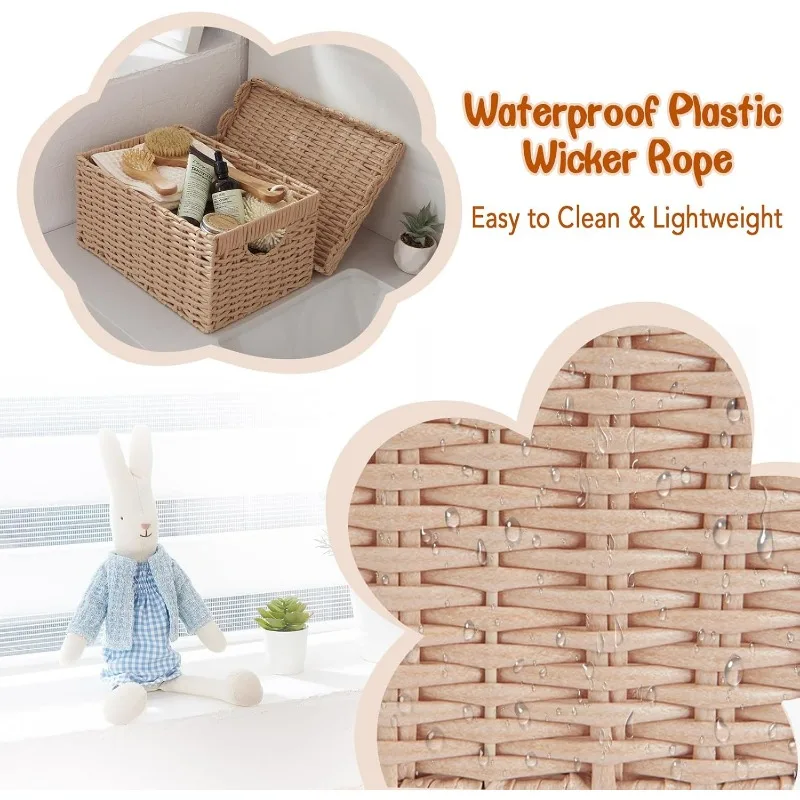
To enhance your DIY storage bench, consider adding woven storage baskets that provide flexible organization within your custom creation.
Whether you choose a pre-made storage bench alternative or create your own custom solution, the perfect bench combines practical storage with aesthetic appeal to enhance your home’s functionality and beauty. By considering material, design, and functionality together, you’ll find an option that meets your unique needs and complements your personal style.

